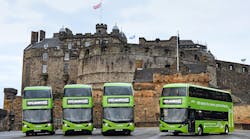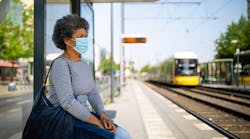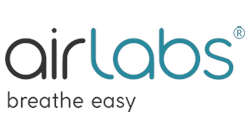OP-ED: Clean air technology needed to accelerate the public transport industry’s recovery from COVID-19
The public transport industry has been hit hard by the pandemic.
There is no doubt that public transport capacity has bounced back but ridership still remains significantly reduced compared to pre-pandemic times after passengers were advised to only use services if absolutely essential.
The legacy of this intervention is that public confidence in the safety of public transport has diminished–people are still working from home or, where they are commuting to work, alternative forms of transport have replaced the bus and train.
More than half of respondents in a recent survey from Transport Focus said that coronavirus has made them rethink how they will use public transport in the future.
Ensuring protection from coronavirus on transport services and restoring confidence in public transport are therefore key challenges that the industry must overcome in order to successfully recover from the pandemic.
So, how can we make public transport even more COVID-safe and persuade the public to get back on board the most efficient, convenient and cost-effective forms of transport, buses and trains?
This has to start with an understanding of the virus and how it is spread.
Understanding the threat
How COVID-19 is spread has been one of the most debated questions since the beginning of the pandemic. And for good reason. Only by having a full and robust understanding of how the disease is transmitted can we ensure that we take meaningful action to break the chains of transmission and stop the spread of the disease.
Since the outbreak of the pandemic, the focus on how coronavirus is transmitted has been on droplet infection and the airborne threat of coronavirus has been consistently downplayed. Particularly during the early stages of the pandemic, there was an over-emphasis on hand washing and cleaning surfaces to reduce transmission, rather than social distancing, mask wearing and ventilation.
This is largely because the WHO and other public health bodies have consistently focused on droplet infection as the principal cause of transmission and largely dismissed the notion that the disease could be transmitted through the air. In March 2020, the WHO tweeted "FACT: #COVID19 is not airborne” despite anecdotal evidence of spreading events indicating that the disease had been airborne.
Numerous leading scientists across the world were not convinced that we should so easily dismiss the threat of airborne transmission. In July 2020, 239 scientists signed an open letter calling for the world health organizations to recognize the reality of airborne spread of COVID-19. Indeed, back in April 2020, AirLabs also published a white paper setting out the evidence behind airborne virus transmission and how air filtration can effectively remove bioaerosol particles.
After much deliberation, finally in May 2021, the WHO made a U-turn on its guidance on aerosol transmission, recognizing the significant airborne threat. However, despite this being one of the most important advancements in our understanding of the pandemic, it was not widely publicized and has therefore largely gone under the radar. More must be done to raise the awareness of this significant threat if we are to do better going forward.
Tackling the airborne threat on public transport
The fact that coronavirus is spread via airborne transmission means that virus particles are emitted when an infected person coughs, talks or breathes and can remain suspended in the air for hours, even after the departure of the host. This makes them especially transmissible and harder to track the spread.
Opening windows and doors is an effective way of increasing ventilation in indoor spaces and reducing the threat of airborne coronavirus. However, it is not always feasible to do this effectively, for example on buses, trains and other public transport.
Transport operators must look for additional solutions to clean the air on board their services to address the airborne risk of transmission.
This is where solutions like our in-vehicle air-cleaning device – the AirBubbl – can make a difference.
The AirBubbl, which has been scientifically proven to remove more than 99 percent of airborne coronavirus, floods the vehicle with more than 37,000 liters of clean air every hour, creating clean air breathing zones to keep drivers and passengers safe.
It is also equally effective at removing air pollution, including harmful ozone gases, nitrogen dioxide (NO2) and ultrafine particle pollutants (PM10, PM2.5 PM2. and smaller), helping to protect drivers and passengers long after the pandemic has passed.
The AirBubbl is already being deployed across the globe by transport operators.
In late June, we announced an exclusive partnership agreement with Journeo to ramp up the distribution of our technology, opening up access to the AirBubbl device for Journeo’s portfolio of customers, including UK transport operators such as Arriva, FirstGroup, Go-Ahead Group and National Express, as well as regional operators such as Sullivan Buses and social enterprise groups such as the HCT Group.
A cleaner, safer public transport industry
Even as we begin to emerge from the worst impacts of the pandemic, it’s clear that we’re going to have to learn to live with COVID-19 going forward. Let’s use the pandemic as a wakeup call to create the public transport industry of the future–an industry that prioritizes health and well-being, with clean air at its heart.
The onus is now on the industry to embrace clean air technology to reassure the public that transport is safe and create a better future for the industry. Only then can we expect to see passenger numbers and revenues return to pre-COVID levels.
-------------------
Stuart Walker is head of product marketing, transport at AirLabs. He is a civil engineer who has a passion for ensuring that technology has direct relevance for its users and exceeds their expectations in design, usability and personalization.

Stuart Walker | Head of Product Marketing, Transport, AirLabs
Stuart Walker joined Airlabs in 2020 from European transport operator Arriva as the head of Product Marketing with a focus on delivering in-vehicle clean air solutions that help make public transport cleaner, safer and more attractive to use for passengers and operational staff alike.
Qualified as a civil engineer, Walker first became involved in consumer technology at Orange in the mid 90s with a career that has moved through Logica CMG to Motorola, digital design agencies and back to Motorola again where he was responsible for the delivery of 3G and 4G, high end mobile devices and supporting technologies. The Guardian, RightMove and MyRegus smartphone applications were delivered by teams led by Walker, who has a real passion for ensuring that technology has direct relevance for its users and exceeds their expectations in design, usability and personalization. Most recently at Arriva, Walker was responsible for the evolution and delivery of Arriva’s commercial and digital platforms for buses.




